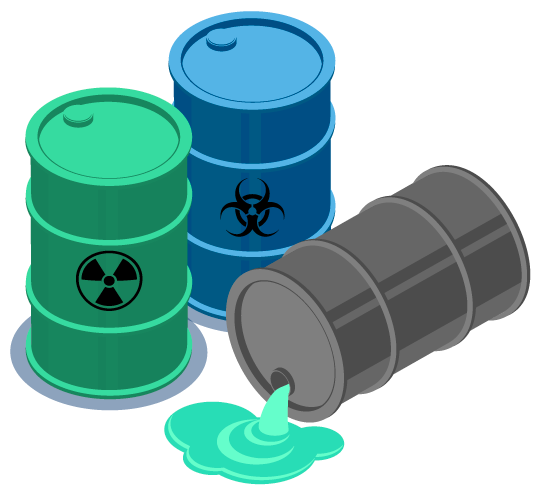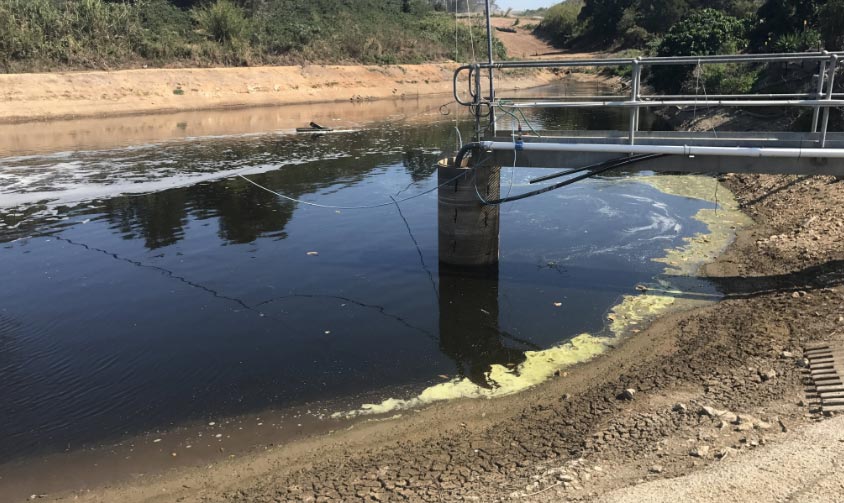Ingenious Industrial Wastewater Treatment Solutions: Securing the Setting
Comprehending the Comprehensive Process of Fluid Waste Disposal: Finest Practices and Environmental Impact Factors To Consider
The management of fluid garbage disposal is a complex issue that needs a thorough understanding of various best methods and their associated ecological effects. From the kinds of liquid waste produced to the techniques used for collection, therapy, and last disposal, each step plays an essential role in guarding ecosystems and public health. As regulatory criteria evolve and modern technology advancements, the discussion around these processes comes to be progressively important. What ramifications do these adjustments hold for future sustainability initiatives, and just how can stakeholders make certain that they are appropriately dealt with?
Sorts Of Fluid Waste
Understanding the different sorts of fluid waste is crucial for efficient monitoring and disposal practices. Fluid waste can be extensively categorized into a number of kinds, each calling for unique handling and therapy techniques.
Industrial liquid waste frequently includes harmful materials, including heavy metals, solvents, and chemicals, generated during making procedures. These wastes demand strict regulatory compliance to secure human health and wellness and the environment. Domestic fluid waste mostly describes wastewater produced from houses, including sewage and greywater, which, although less toxic, can still position substantial risks if incorrectly handled.
Agricultural liquid waste, including drainage from ranches, often has fertilizers and pesticides that can cause environmental deterioration otherwise dealt with appropriately. Clinical liquid waste, generated from healthcare centers, includes polluted liquids such as physical fluids and chemicals, requiring specialized disposal approaches to avoid infection and ecological contamination.
Finally, oil and oil waste, typically produced by restaurants and automobile sectors, can trigger severe blockages in sewer systems if not handled correctly. Comprehending these categories facilitates targeted approaches for therapy, conformity with laws, and effective disposal techniques, eventually advertising environmental sustainability and public health and wellness safety and security.

Collection Methods
Effective collection approaches are critical for the correct administration of liquid waste, making certain that it is collected securely and effectively prior to treatment or disposal. Numerous strategies are used relying on the sort of liquid waste generated, the quantity, and the certain characteristics of the waste.
One common technique is making use of dedicated collection tanks or sumps, which are developed to catch liquid waste at the resource. These systems usually include pumps that help with the transfer of waste to larger storage space containers or therapy facilities. Additionally, mobile collection devices equipped with vacuum cleaner technology are employed in situations where waste is produced periodically or in hard-to-reach areas.
For commercial settings, closed-loop systems can properly decrease leaks and spills, enabling the healing and reuse of fluid waste. It is additionally important to educate workers on appropriate collection methods to reduce risks connected with dangerous compounds.
In addition, implementing regular maintenance timetables for collection equipment makes certain optimum efficiency and security. The combination of advanced monitoring systems can improve collection effectiveness by offering real-time information on waste levels and possible risks. On the whole, efficient collection methods are foundational to lasting fluid waste monitoring methods.
Treatment Procedures
Treatment procedures play an important role in the monitoring of fluid waste, transforming potentially harmful materials right into secure effluents or multiple-use resources - liquid waste disposal. These procedures can be generally categorized into his response physical, chemical, and biological methods, each customized to resolve details contaminants present in the waste stream
Physical treatment methods, such as sedimentation and filtering, job by removing suspended solids and particulate matter. These techniques are commonly the initial step in the therapy chain, efficiently reducing the lots on succeeding processes. Chemical therapies include the usage of reagents to reduce the effects of unsafe materials, speed up heavy steels, or oxidize organic pollutants, thereby official statement enhancing the security of the effluent.
Biological therapy procedures, including turned on sludge systems and anaerobic digestion, maximize the natural capacities of bacteria to deteriorate natural matter. These methods are particularly effective for wastewater consisting of naturally degradable pollutants. Advanced treatment technologies, such as membrane layer filtering and progressed oxidation procedures, are progressively utilized to achieve greater degrees of purification.
Incorporating a mix of these therapy approaches not just makes sure compliance with regulative standards however additionally advertises ecological sustainability by recouping important sources from fluid waste.
Disposal Options
Exactly how can organizations make certain the safe and responsible disposal of liquid waste? Efficient disposal choices are important for securing public health and wellness and the atmosphere. The main techniques consist of land incineration, treatment, and disposal followed by discharge into municipal wastewater systems.
Land disposal includes the careful containment of liquid waste in assigned garbage dumps, making certain that it does not leach into bordering soil or water. Incineration, on the various other hand, topics liquid waste to high temperatures, converting it into ash and gases, which call for correct filtering to decrease discharges. This approach appropriates for hazardous wastes that can not be treated via typical methods.
In cases where liquid waste can be dealt with, organizations may select biological or chemical therapy processes to reduce the effects of harmful components before discharging the dealt with effluent into local systems. This path commonly lines up with governing requirements, ensuring that the effluent meets safety standards.
Inevitably, companies have to carry out comprehensive analyses of each disposal option to determine its feasibility, thinking about variables such as waste structure, regulatory conformity, and possible dangers to wellness and the setting. By choosing proper disposal methods, services can add to an accountable waste management approach.
Ecological Influence
The ecological influence of liquid waste disposal is an essential consideration for companies seeking to reduce their environmental footprint. Furthermore, the discharge of without treatment or improperly treated waste right into surface area waters can result in eutrophication, leading to oxygen exhaustion and the succeeding fatality of fish and various other organisms.

To reduce these influences, organizations have to embrace best methods such as applying rigorous waste treatment processes, promoting recycling and reuse, and sticking to governing standards. By taking a positive approach to fluid waste administration, entities can significantly lower their environmental footprint while sustaining sustainable advancement goals. Eventually, a thorough understanding of the ecological influences related to liquid waste disposal is vital for notified decision-making and accountable stewardship of natural sources.
Final Thought
Efficient monitoring of liquid waste is vital for securing ecological honesty and public wellness. By embracing best techniques in collection, disposal, and treatment, together with adherence to regulatory standards, the potential visit this website for hazardous contamination of environments can be dramatically lowered. Constant advancements in technology and processes add to lasting waste monitoring efforts. Inevitably, a detailed understanding of liquid garbage disposal not just mitigates ecological impacts yet also fosters a commitment to responsible resource administration and environmental stewardship.
The management of liquid waste disposal is a multifaceted concern that needs a complete understanding of different finest practices and their associated environmental effects. From the types of liquid waste generated to the techniques utilized for collection, therapy, and last disposal, each step plays an essential function in securing communities and public wellness.The environmental effect of liquid waste disposal is a crucial consideration for organizations looking for to minimize their ecological footprint. Ultimately, a thorough understanding of the ecological effects associated with liquid waste disposal is necessary for educated decision-making and accountable stewardship of natural sources.
Eventually, a comprehensive understanding of fluid waste disposal not only alleviates environmental effects but likewise promotes a dedication to responsible source management and ecological stewardship.